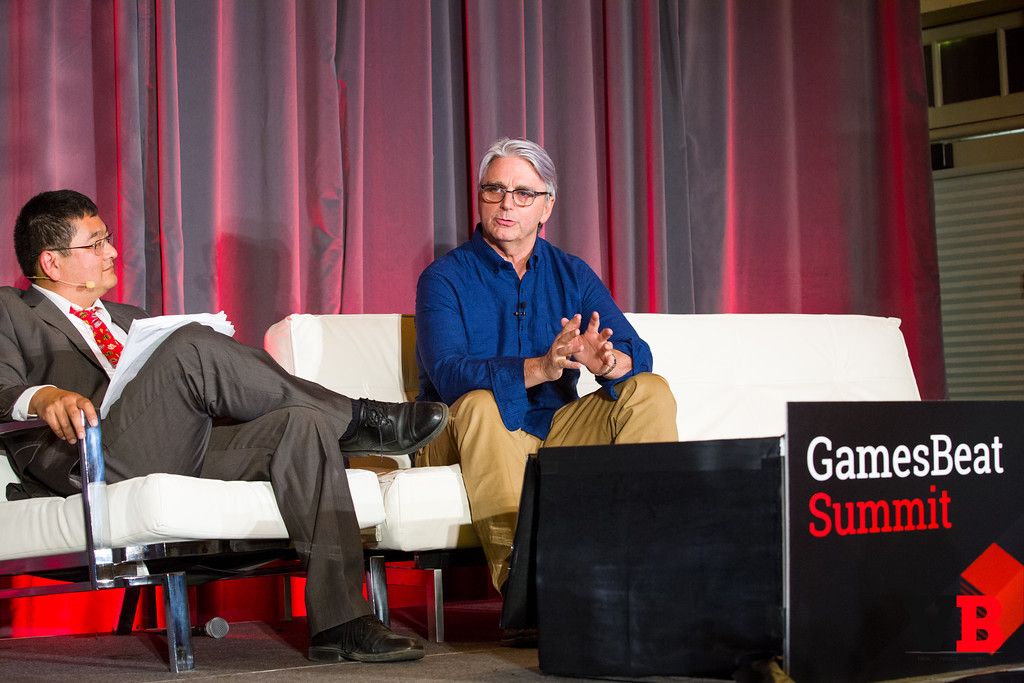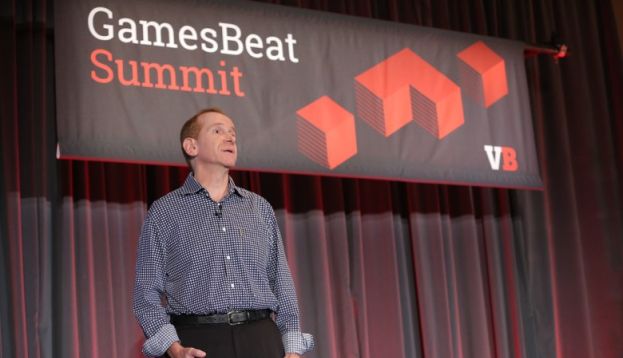The GamesBeat Summit just concluded, and as expected there was plenty of good information, insights, and networking to be found there. Some of the key info from the first day included industry projections and some veterans of the game industry looking ahead at the next few years.
Tim Merel of Digi-Capital led off the GamesBeat Summit with some facts and figures from his latest reports about mobile games and the emerging AR/VR market. Mobile will become largest game software segment, according to Merel, climbing from $29 billion this year to $45 billion by 2018. The rise in mobile gaming is global, but is clearly driven by China. Merel says that Asia in 2018 will equal US and Europe mobile game sales combined, and China will be the largest mobile game market.
As to which platform is commanding, Merel looked at both iOS and Android. “Traditional logic and research would tell you that iOS has already been exceeded by Google Play in number of downloads, and nobody would argue with that,” Merel said. “But when you start to think about iOS versus Android and the number of different Android stores in China, you get a different picture. If you look at it in revenue terms, this year iOS is going to be the largest single app store in terms of revenue. Going forward, we expect Google Play and Android app stores to have over half of all mobile games revenue. But it isn’t all about raw numbers. Even though Android will overtake iOS in terms of revenue, iOS remains far and away the best app store for monetization for games.”
Merel believes that augmented reality (AR) and virtual reality (VR) have big potential for games in the next few years. He sees the total AR/VR market will hit $150 billion by 2020, though games are only a part of that. AR will be by far the biggest market, and in Merel’s view “AR can not only outgrow VR, but also has the potential to cannibalize the mobile market.” Merel believes that AR looks like smartphone market, wth the potential for hundreds of millions of users, versus tens of millions of users for VR. Breaking down that $150 billion, Merel projects the total VR market at $30 billion by 2020, and AR $120 billion. The biggest chunk of that AR revenue is hardware, though, and games are just a small part of the revenue potential with many other categories providing significant revenue. Even though the overall market for AR is bigger than VR, games on AR will not be as big as games on VR.
 John Riccitiello
John Riccitiello
Video game pioneer Nolan Bushnell followed Merel, sitting down with VentureBeat’s Dean Takahashi for a conversation about games and the future. He’s often approached by people who have games they want to show him.” I’m always looking for destructive innovation, not evolutionary,” Bushnell said. “Most of what I see is evolutionary, pedestrian, sophomoric. I tend to not like that. I like to get involved with things that are truly revolutionary and look like they’re going to be important.” Still, Bushnell made the point that even great games don’t usually have a long life span. “The half life of a typical game, a really good game, is six months to a year,” Bushnell said. “What you want to do is find the threads that have sustainability.”
Bushnell’s vision for the future of games is clear. “The mobile space to me right now is very, very noisy, so I’m always looking for the next reset,” Bushnell opined. “The next reset is clearly AR or VR, and I have a little wager on each one. My gut says AR is going to be more important.”
The CEO of Unity, John Riccitiello, followed Bushnell with some pointed commentary on the state of the games business, informed not only by his current position but by his many years as the CEO of Electronic Arts. Riccitiello discussed Unity and how it’s become a huge platform. “In a given month 1.1 million developers are creating content on Unity,” Riccitiello noted. “We see 700 or 800 million Unity games being downloaded every month.”
While Riccitiello is working to improve Unity on many levels, including its technical performance, he’s also looking to give Unity developers help with their business. “One of the bigger problems developers have today is monetizing their game,” Riccitello said. “Finding an audience for it, getting paid for it, whether it’s advertising or virtual goods. We have a huge team of people working on the simple thesis that game developers are probably collecting 30 cents on the dollar of what the potential is for their game. We want to get them 100 cents on the dollar. We’re going to put a suite of programs together that will help developers get that extra 70 cents they’re not getting now.”
Riccitiello believes that marketing, analytics, and audience building are all subjects that need more effort in the games industry. “The vast majority of independent developers today lose money,” Riccitiello said. “Frankly, many major publishers on too many of their titles lose money because they aren’t able to get the monetization they want. If someone doesn’t solve that problem, our ecosystem isn’t going to fill rooms like this someday. We need to solve monetization.”
Images courtesy of VentureBeat

